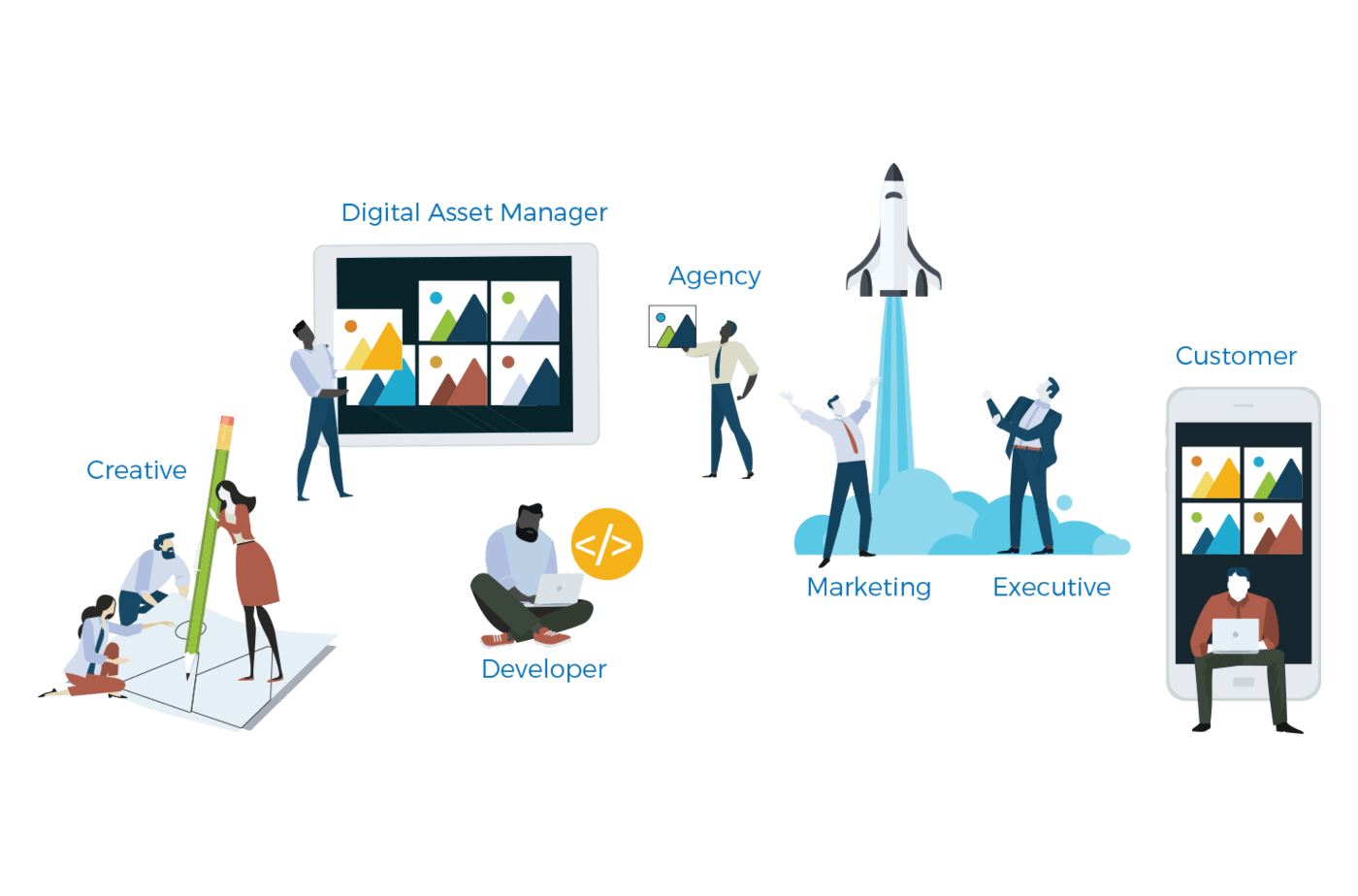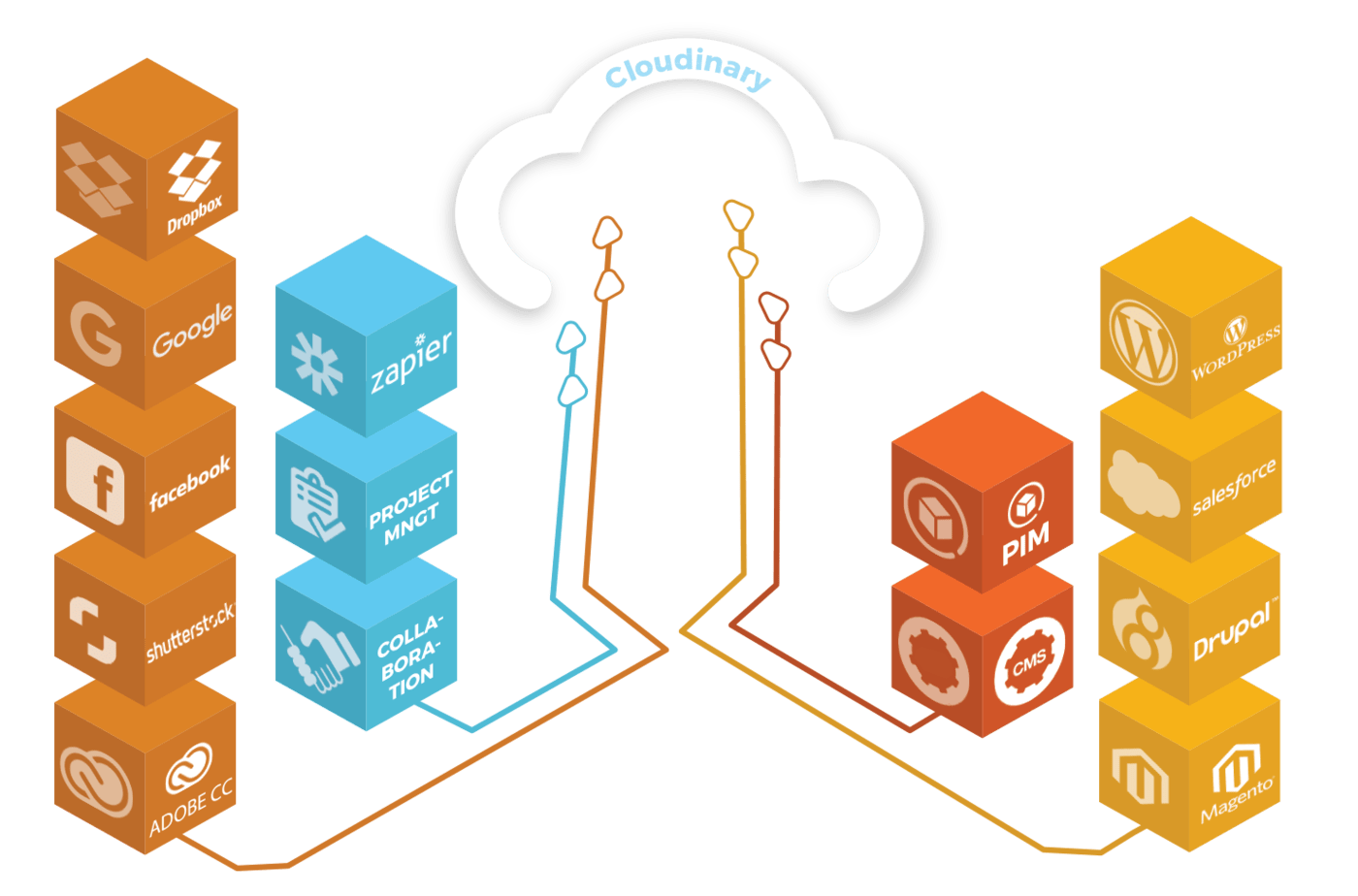The explosion of rich media and the importance of that media to customer engagement is undeniable. Businesses that take advantage of this trend and try to solve some of the typical asset management pain points often end up using multiple point solutions. While these solutions might solve some problems in the short term, they ultimately lead to content and functional silos, inefficient workflows, and scale limitations.
If you look at digital asset management as a departmental fix or solution, it can turn into just another three-letter acronym adding to the digital frenzy.
There are more than a few jokes on why it is referred to as DAM, but that’s not how it’s supposed to be. The overwhelming nature of the entire digital ecosystem makes it critical to evaluate DAM, and every other solution, with the perspective of getting the most out of it. This requires:
- Widespread adoption across the organization
- Easy integration with other systems
- Future-proofing with automation and scale
Traditionally, DAM focused on certain functional needs, such as storing and re-purposing assets, without taking into consideration the entire asset lifecycle. And many were designed before today’s needs were even a reality. So, as many teams cobble together multiple systems for managing other aspects of the lifecycle, disconnects invariably occur and ad-hoc handoffs can lead to inconsistencies, confusion, and inefficiencies.
Assets typically flow through creative, marketing, and development teams before they are served to customers. So it is crucial to have a unified approach across all the teams and functions that interact with assets. With that in mind, DAM should be an organization-wide initiative, enabling these teams, to work faster, together across the lifecycle – from organizing and sharing assets to collaboration to dynamic manipulation [of work-in-progress assets] and publishing across every device and channel.

To drive successful adoption across the organization and meet the needs of various functions, Cloudinary offers flexible implementation options. Brands can choose to use Cloudinary through its interactive UI, custom widgets that can be embedded into other applications, or as a headless DAM.
To empower development and web teams that play a critical role in making sure that images, videos, and other rich media assets look good and load fast on every device and channel, Cloudinary goes well beyond just standard management. Developers can leverage the same platform via APIs to automatically deliver visual experiences that meet customer expectations, without slowing down the time to market or driving up the cost.
All the teams can work together on a single platform and orchestrate dynamic visual experiences that customers have come to expect.
If you believe in stacks over suites, you need to ensure that all the best-of-breed solutions you put together to build a robust digital ecosystem can communicate with each other.
Putting images, videos, and other rich media assets at the core of visual storytelling, Cloudinary acts as the centerpiece, connecting your entire asset lifecycle, from creation all the way to consumption.

For example, just today we announced our new Cloudinary Creative Cloud Connector which will allow creative teams to move media assets freely between the DAM and Adobe platforms, and quickly and easily manipulate assets all while they remain within the single source of truth.
Extensible APIs and webhooks make it extremely simple to integrate with other upstream applications for project management and collaboration; and downstream applications such as your Web CMS, so you can access your library from within your system of choice, and distribute assets across the customer journey without friction.
Oh, by integrating with tools widely used by your team, you’ll see greater adoption!
Automation is key to improving the efficiency of tedious, repetitive tasks that don’t scale well manually. Using AI for tagging assets based on their content is becoming a common practice. But the power of automation can extend beyond just tagging.
Cloudinary also enables automation of other tedious aspects, such as creating asset variants for every device and channel. Leveraging AI to automatically adapt images and videos – resizing and cropping, selecting the best format and adjusting the compression quality – makes the marketing team more autonomous and frees up critical resources to focus on their core responsibilities.
And, with the ever-changing technology landscape, moving faster on digital transformation initiatives requires effortless adoption of new technologies and evolving media trends. Cloudinary partners with image and video experts and associations along with industry experts such as AWS, Google, Akamai, and Fastly, to bring the most innovative technologies to users without any technical burden.
As your organization grows, your asset management pains grow in parallel. Being able to effortlessly scale rich media operations to support varying needs and global growth is critical.
Built on top of a dynamic media platform with a highly scalable architecture, the Cloudinary DAM enables you to get started in minutes and perform resource-intensive media operations, such as bulk migration, uploads, tagging, search, manipulations, and delivery without any technical limitations.
Cloudinary has been battle tested with tens of billions of media requests on a regular basis by media-intensive companies.
In a nutshell, a unified approach to digital asset management can enable your teams and empower your customers. Leverage a dynamic approach to digital asset management to unify disparate processes and functional groups, streamline asset workflows, and drive engagement.
- What is Digital Asset Management and Why It Matters for Organizations
- Reimaging DAM: The next-generation solution for marketing & development
- Digital Asset Collaboration be DAM’d
- Adding Structure to Your Asset Metadata
- Share Your DAM Assets!
- Automate Your Media Assets’ Workflow With Machine Learning
- API for extracting semantic image data – colors, faces, Exif data and more
- The Evolution of Digital Asset Management Systems: On-Premise, Cloud, Dynamic
- Media Asset Management and Enterprise Content Management: What’s the Difference?
- Digital Asset Managers: What They Do and Why You Need One
- Digital Asset Management Software: A Buyer’s Guide
- DAM Best Practices and Critical Success Factors
- How a cloud-native DAM optimizes customer experiences
- Bringing the Digital Ecosystem Together with a DAM Platform
- Don’t let your digital assets become a liability!



